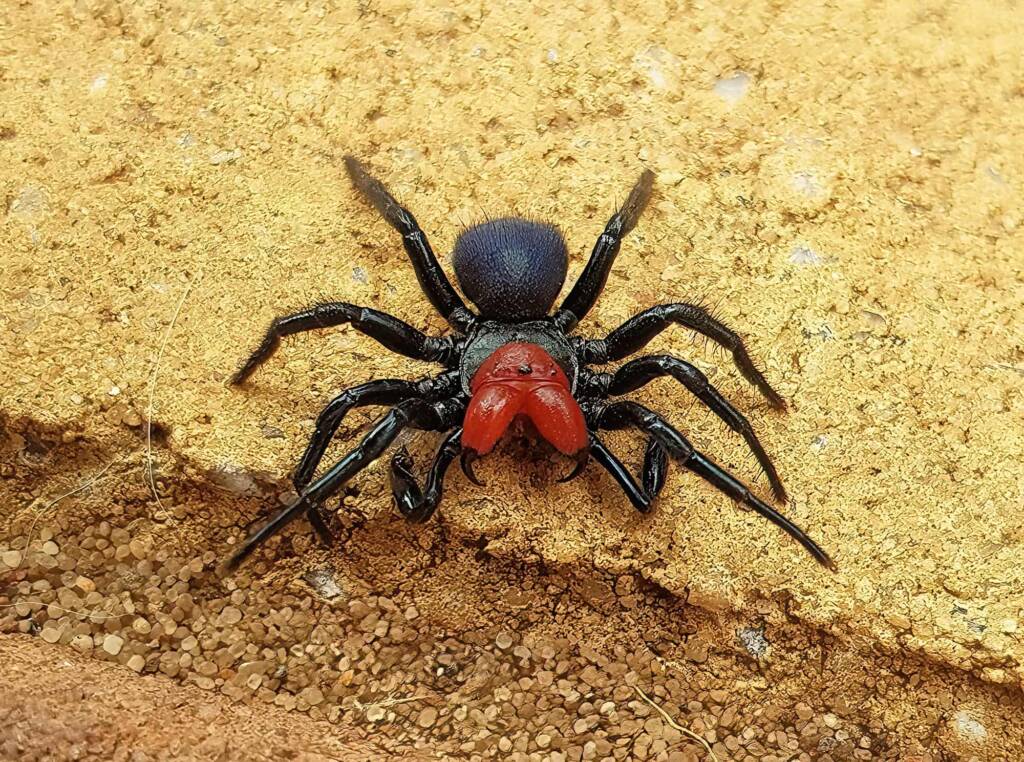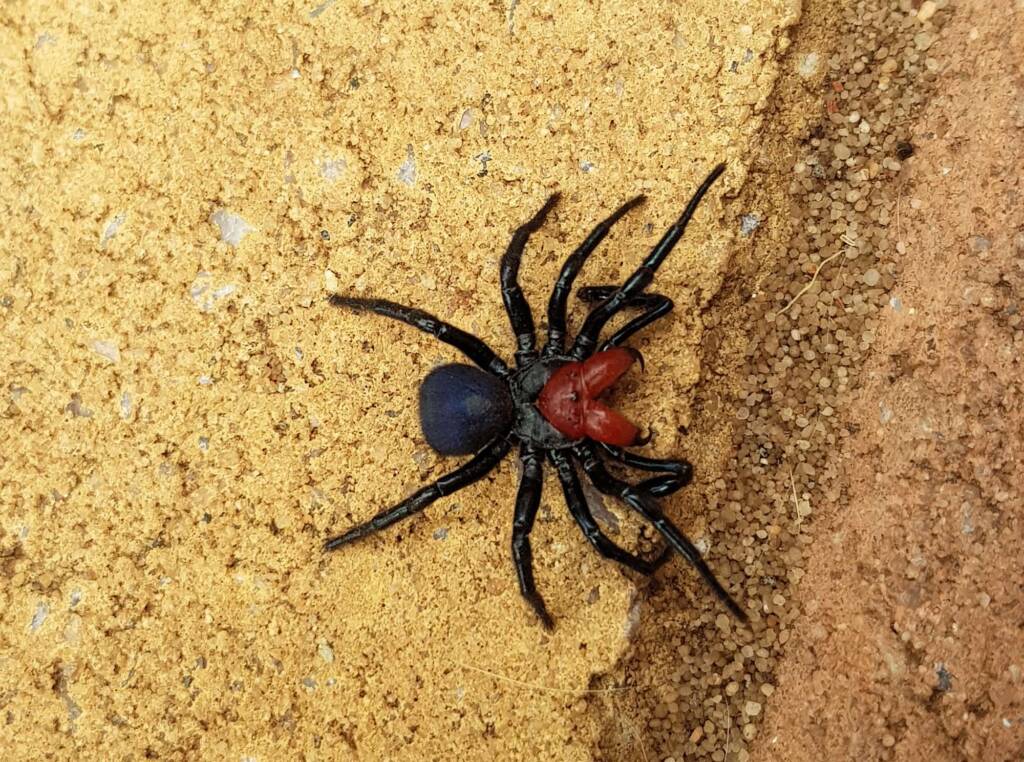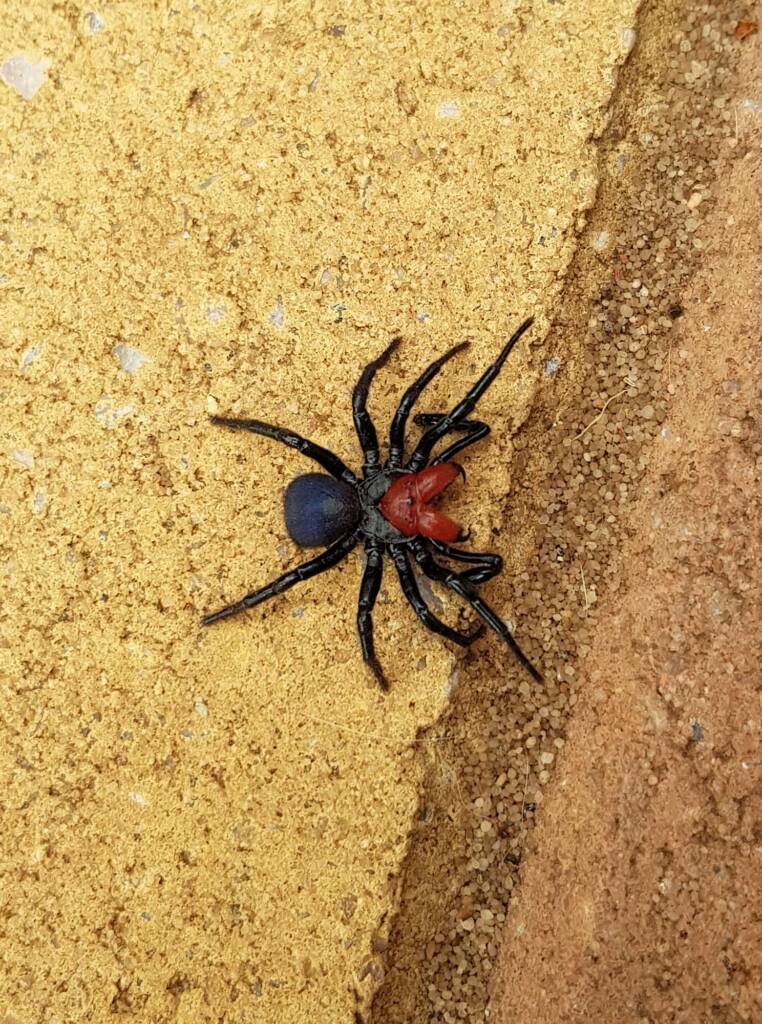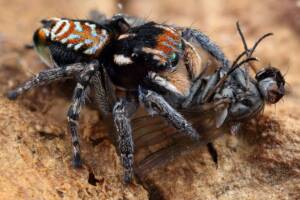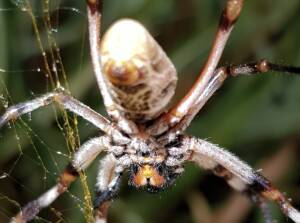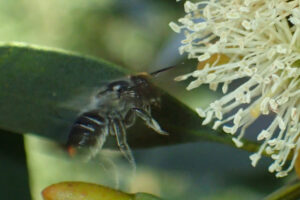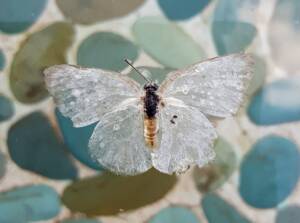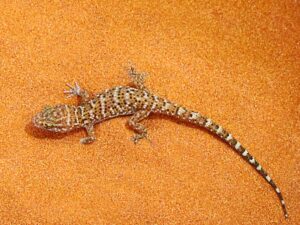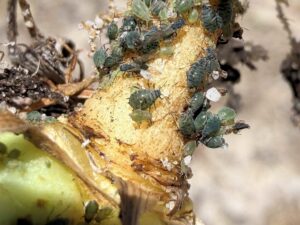Author Koh Lin ◦
Growing up, I knew very little about spiders… and whilst I know a little more today… there is so much more to learn…
My personal spider encounters in Alice Springs are to be treasured. They are fascinating creatures… that are in the class Arachnida…
Following are some of the many amazing spiders I have seen personally 😀
Of course, extreme care should be taken, as some spiders are venomous, and others may inflict a nasty sting/bite. I personally do not handle any spiders, always taking care and keeping a respectable distance when taking photos.
My thrilling encounter with the Red-headed Mouse Spider (Missulena occatoria)…
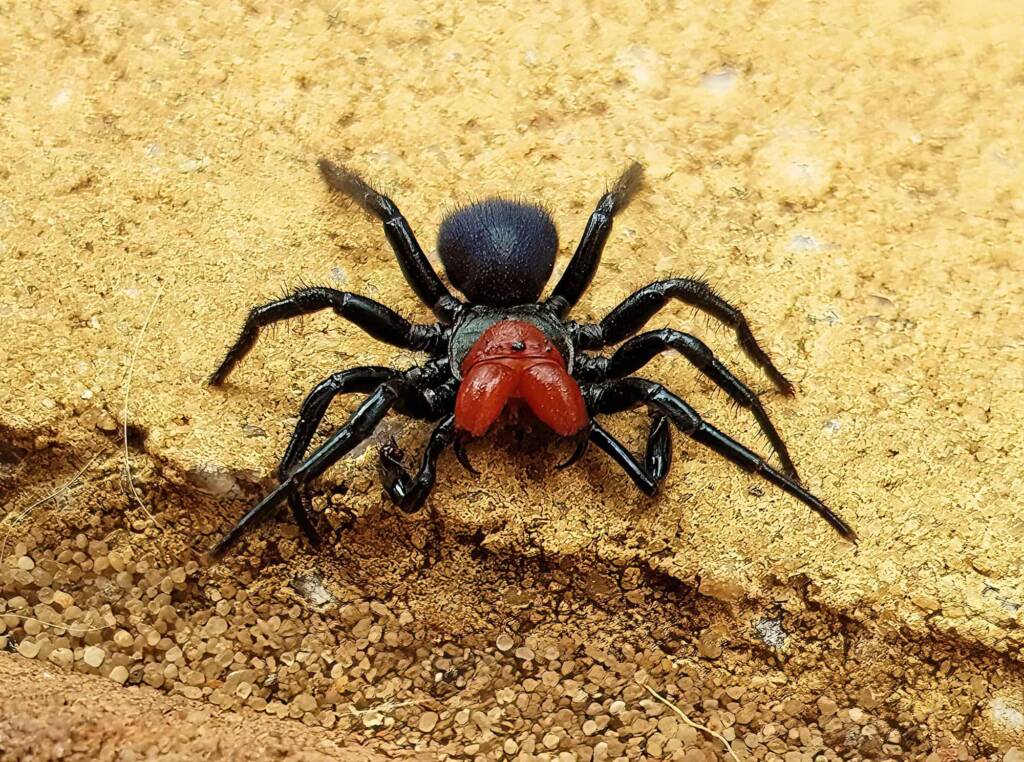
One of the spiders easily identified is that of the Australian Golden Orb Weaver Spider (Trichonephila edulis). Often recognised by the big golden webs that they spin, with the female sitting in the centre of the web.
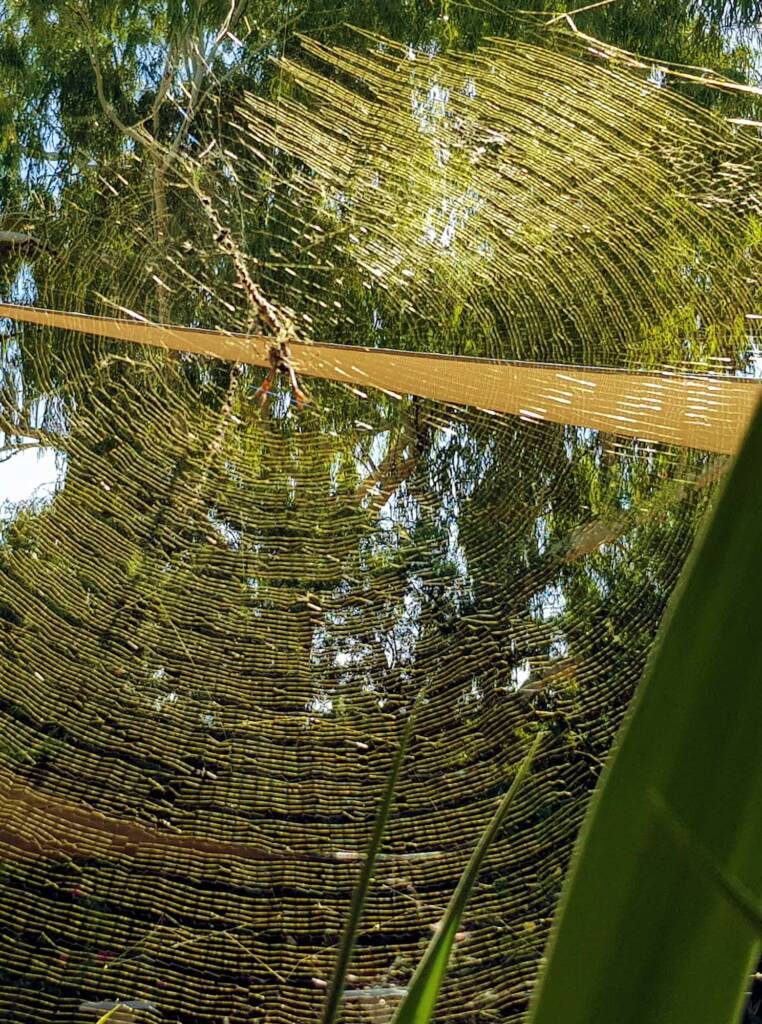
Less obvious is the dimorphic male Golden Orb Weaver, much smaller in size and appearance to the female Golden Orb Weaver.
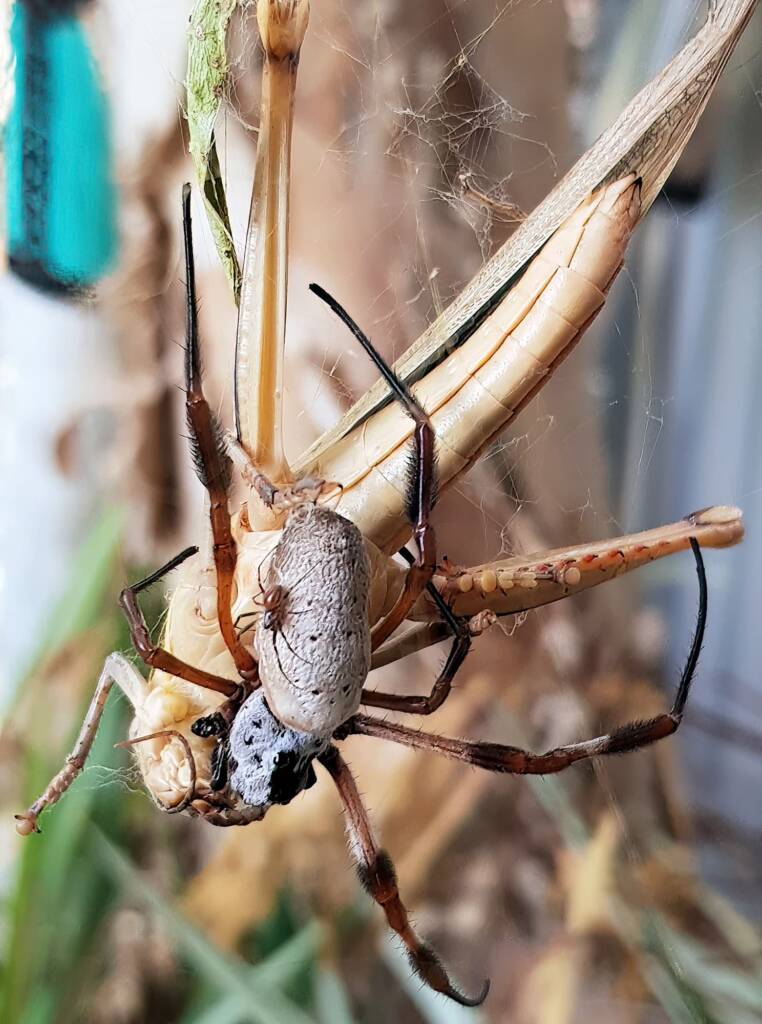
This chunky looking Badumna insignis, commonly known as the Black House Spider, was actually in my house, and relocated into my garden.

The Banded Garden Spider (Argiope trifasciata) spotted above the spinifex at the Alice Springs Desert Park.

Sometimes you have to be careful when you go to open the gate, as you may have a Beautiful Badge Huntsman (Neosparassus calligaster) just chilling out.
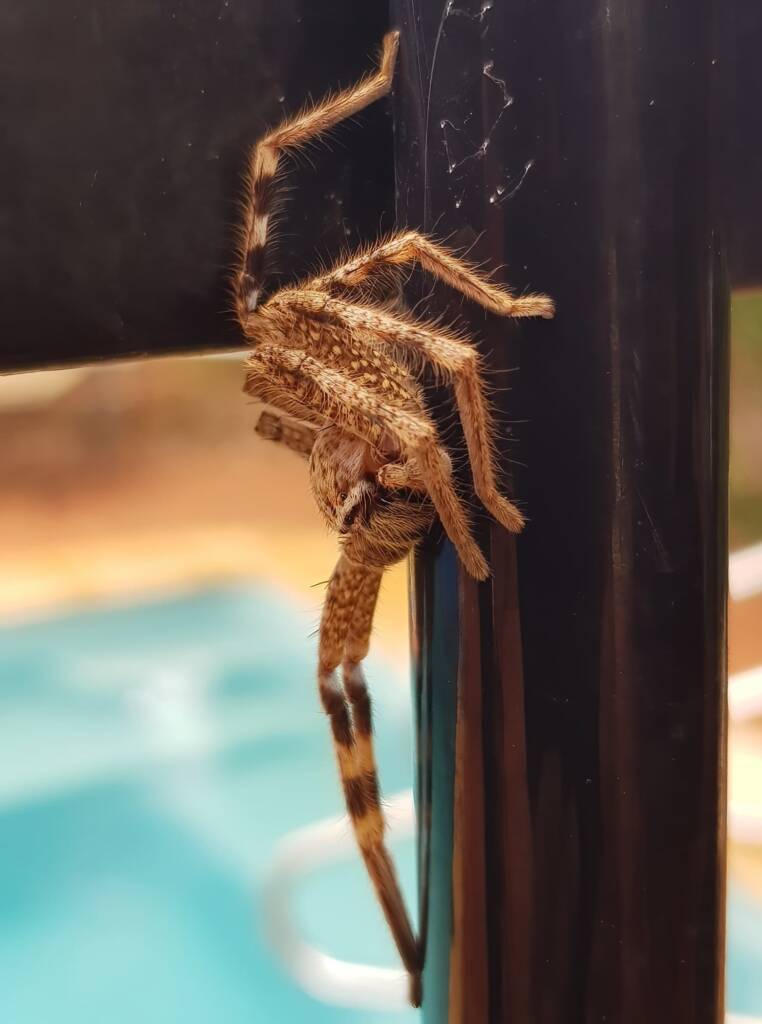
A commonly seen large spider is the Desert Huntsman Spider (Isopedella inola).
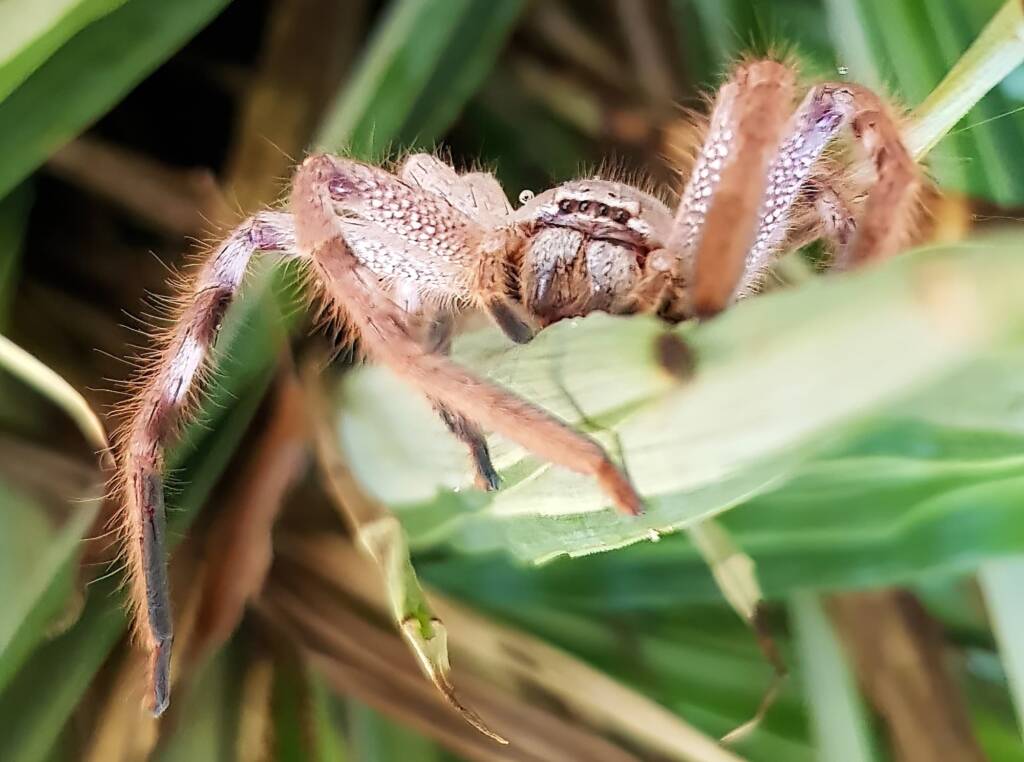
The Elegant Water Spider (Dolomedes facetus) is often seen around fish ponds and occasionally in swimming pools, as they skate across the water surface.
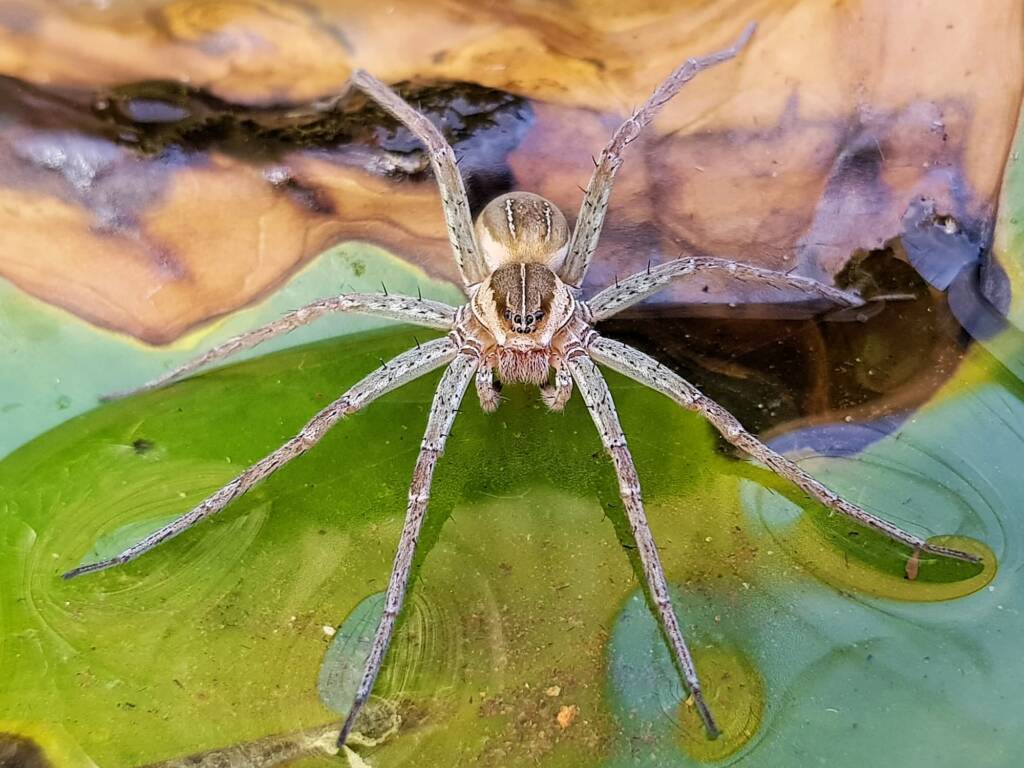
A tiny Euryopis (Ant-eating Spider), I rescued from a swimming pool in Alice Springs.

This Gnaphosid (Ground Spider) from the family Gnaphosidae, was walking across the ground in Alice Springs.

The Green Lynx Spider (Peucetia sp) observed in the front garden in Alice Springs.

This really small Hackled Orbweaver (Uloboridae) in my garden, was interesting to observe. It was nervous of me watching to start with. What looked like the head of the orbweaver, is actually food that the spider has caught.
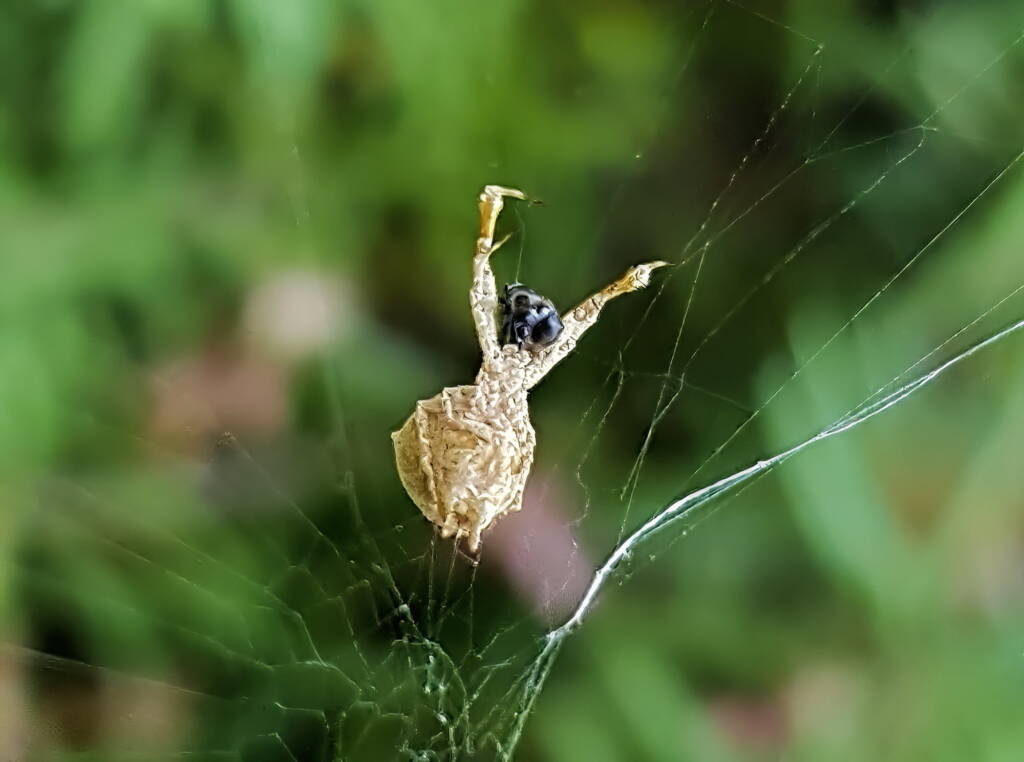
The following Hogna crispipes, seen walking across the outdoor paved area of a home, belongs to the Hogna genus of wolf spiders (family Lycosidae). Note the long abdomen.

Sad to say that this Hortophora sp spider was deceased when I retrieved it from the bottom of a swimming pool in Alice Springs.
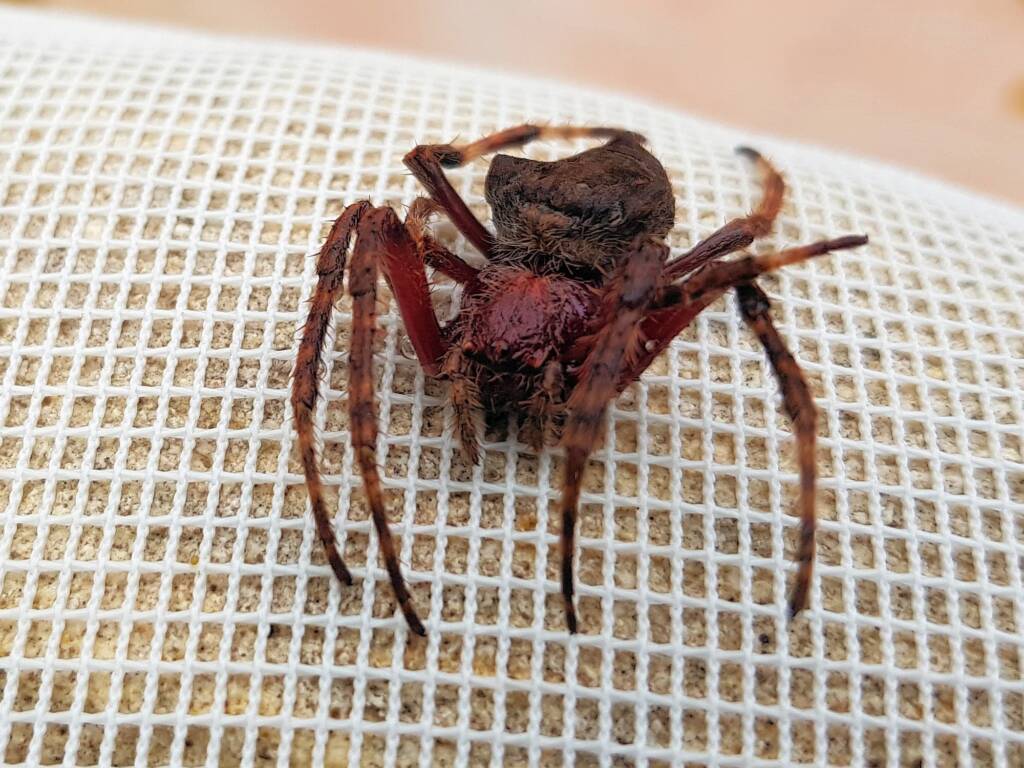
The Long-jawed Orb Weaver (genus Tetragnatha) is often seen around fish ponds. The following was photographed above a goldfish pond with running water in Alice Springs.

This is a Longtailed Orb-weaving Spider (Argiope protensa) that I spotted in its web, strung above spinifex and between a couple of gum trees, at the local Alice Spirngs Desert Park.

One of the Lynx Spiders (family Oxyopidae). There are several genera of this group of spiders, that come in a variety of colours. Most have spiny bristles on their legs and spend their lives as hunting spiders.
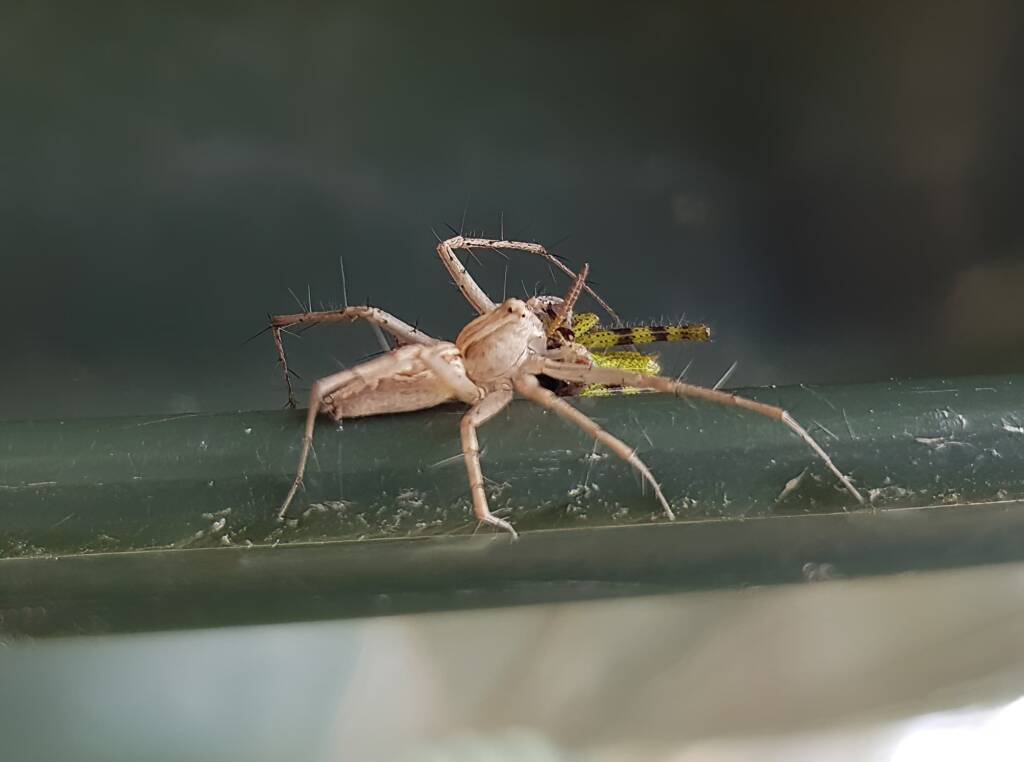
Seen in Alice Springs, this small spider is thought to belong to the genus Elassoctenus (family Miturgidae).
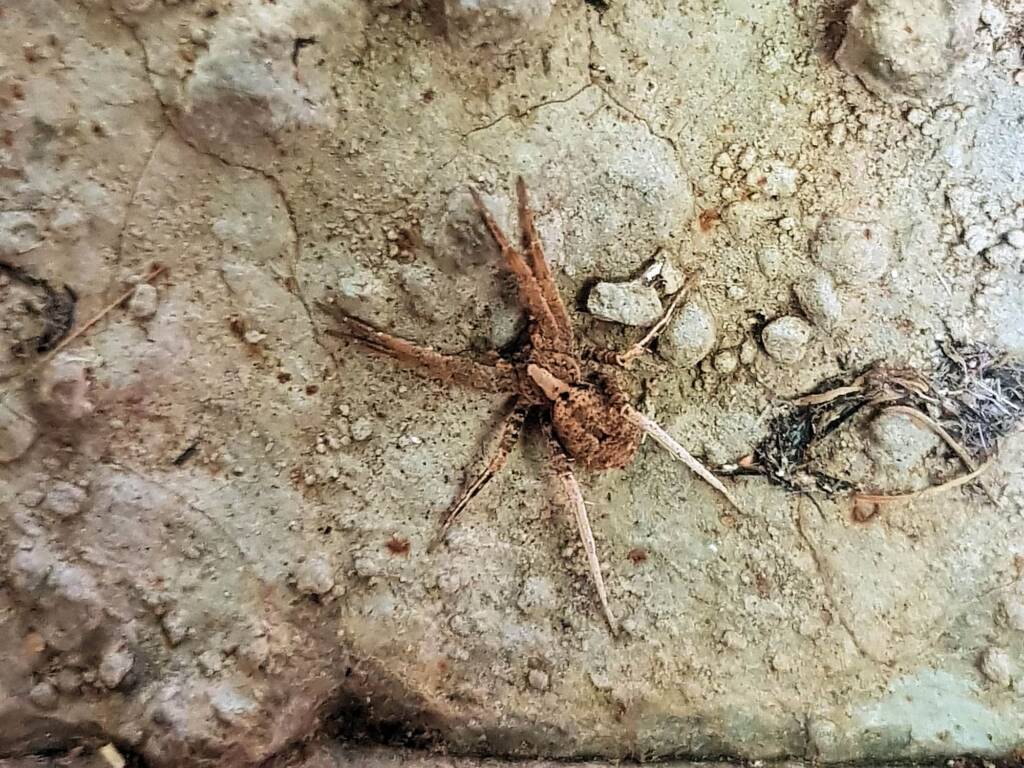
The genus Oecobius, are commonly known as Wall Spiders. They are a small active cribellate spider (approximately 2 to 3 mm in size) and always on the move.

This Orange-legged Swift Spider (Nyssus coloripes) was in the house and safetly relocated to the garden (in Alice Springs).

The following Patriotic Ground Spider (in the genus Anzacia) was rescued from a swimming pool in Alice Springs.

The Redback Spider (Latrodectus hasselti) is one of the more common spiders found around the homes and gardens where people live. They are seen in Alice Springs (and throughout Australia). The spider is considered highly venomous. They are variable in colour, particularly in the immature spiders, that vary from pale brown in colour to dark brown and black (especially after a spider has moulted).
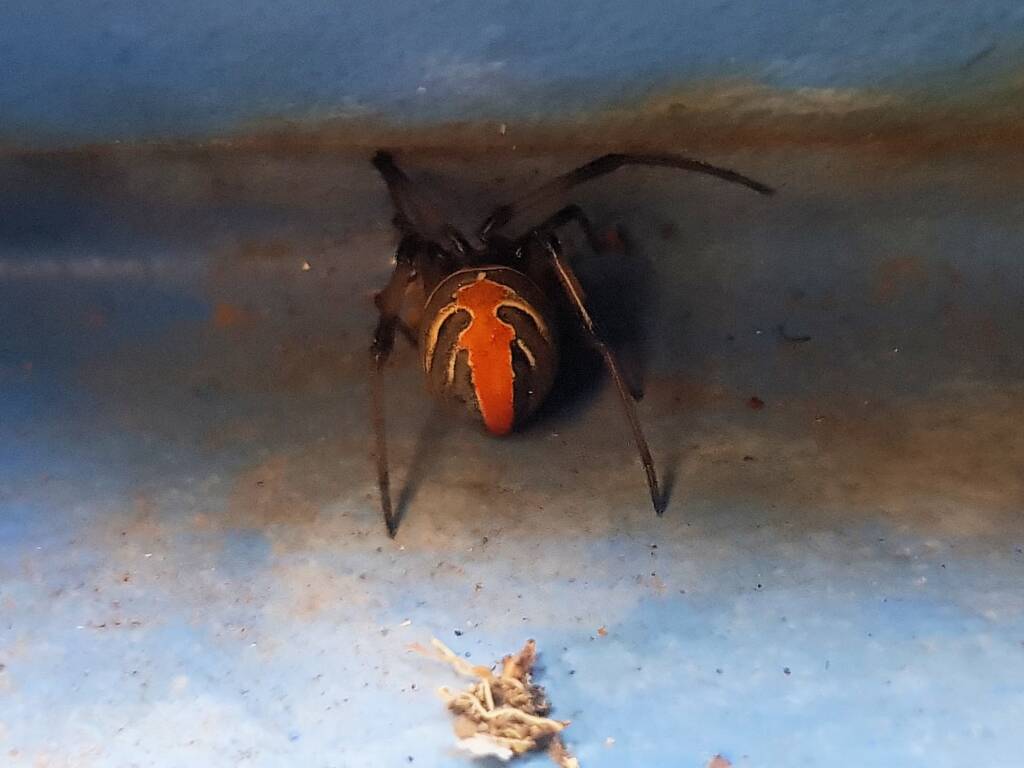
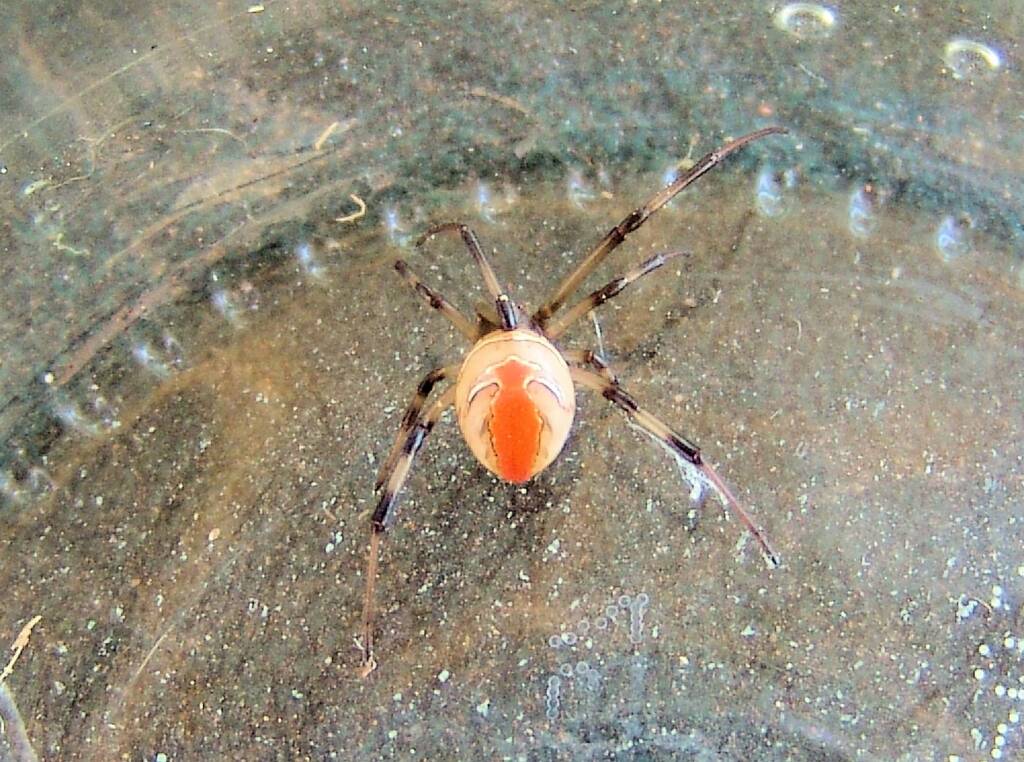
This Sondra aurea, commonly known as a Jumping Spider, in Alice Springs.

The genus Storena (in the family Zodariidae), are commonly known as the Ant Spiders. On the upper surface of the abdomen of this genus, there are 2, 3, or 5 spots that are yellow or orange, with the unpaired spot (when present) positioned above the spinnerets and a brown pitted shield sitting between the spots.

The Striped Orb Weaver (Neoscona sp) pictured here is seen on the stem of a native grass in the Olive Pink Botanic Garden in Alice Springs. Their colouration help them blend in with the native grass.
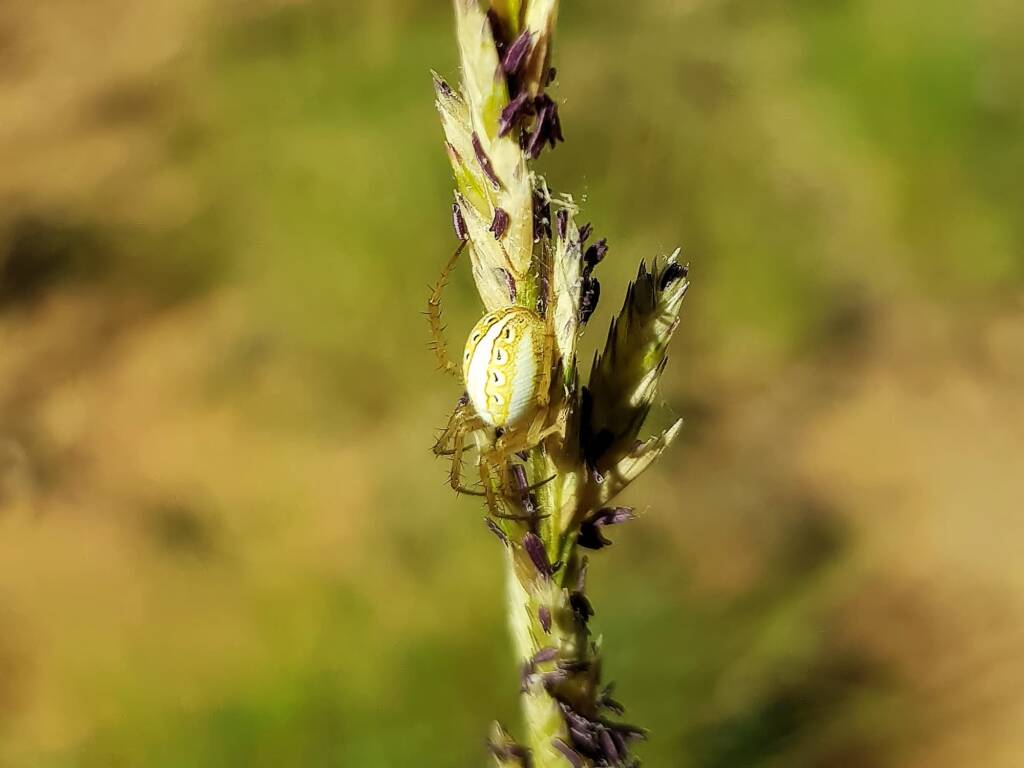
The following is thought to be a Wolf Spider from the genus Allocosa sp or Hogna sp.
One of the larger spiders in size, the Wolf Spider group can be quite difficult to identify, and may require more extensive scientific studies such as dna analysis to ID, or it could also be an unidentified species.
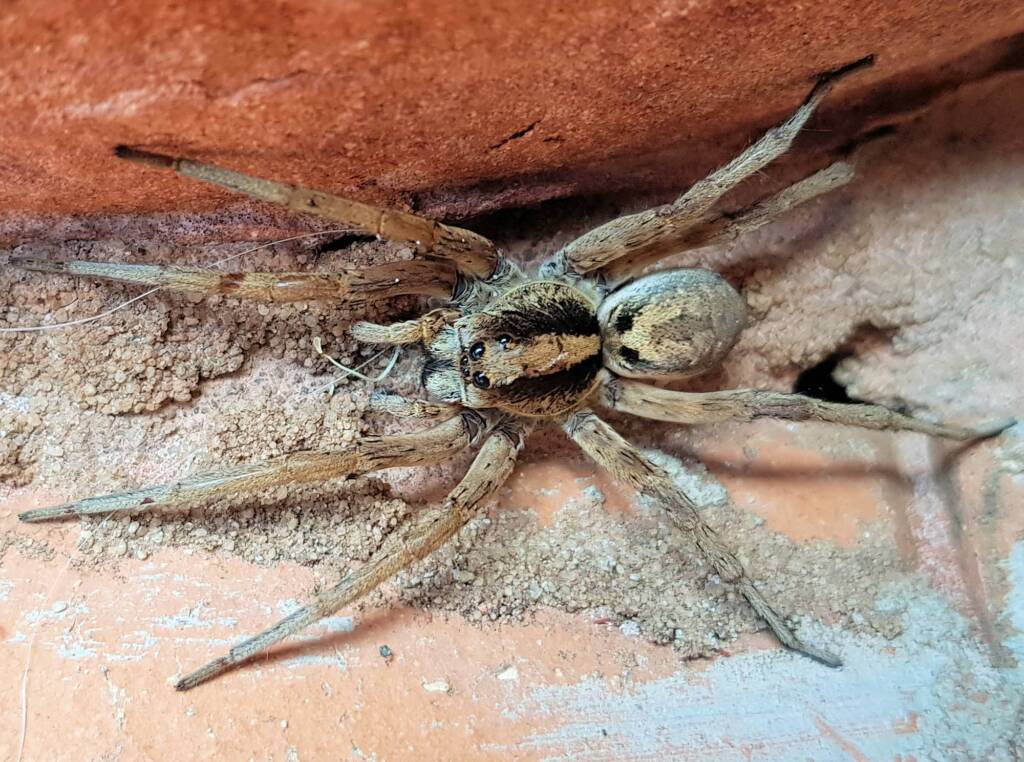
The following Wrap-around Spider are often observed wrapped around a twig. Their colouration provides perfect camouflage. It is a member of the Dolophones a genus of orb-weaver spiders in the family Araneidae (formerly Argiopidae).
The abdomen of these spiders is concaved, being curved in such a way that when the spider is resting on a twig, it appears wrapped around the twig. Their colouration providing the perfect camouflage against the twig.
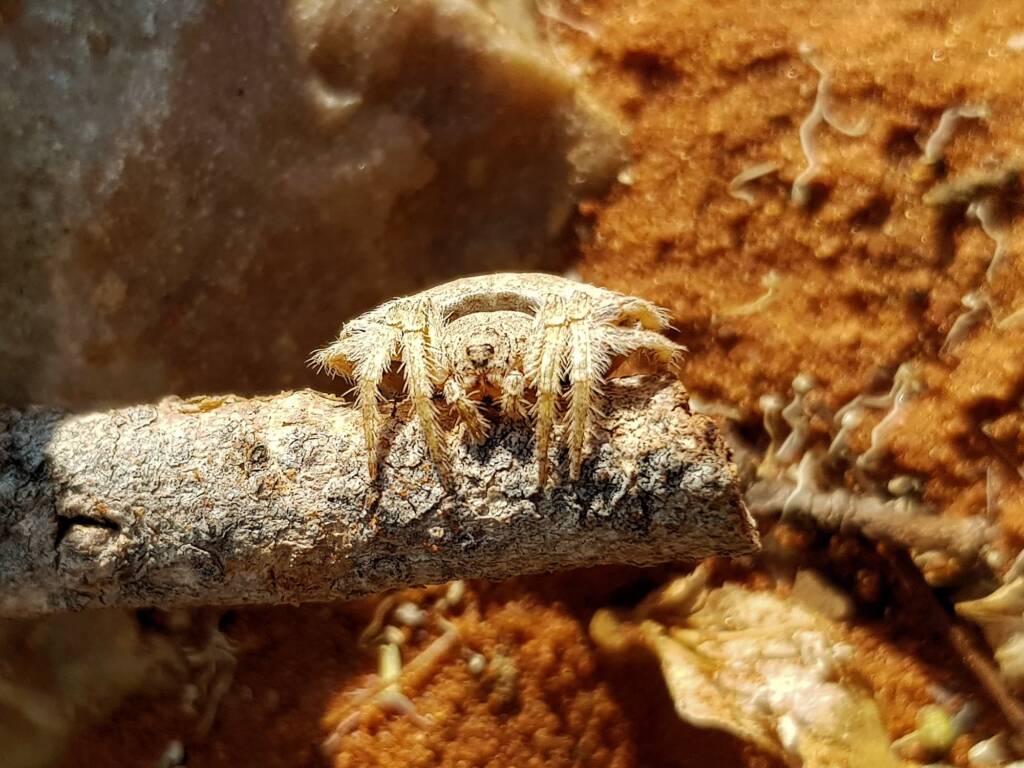

From the family Zodariidae, a group known as Ant Spiders, this spider was rescued from the swimming pool in Alice Springs.

See some of the amazing spiders in Australia from our contributors and guest authors.
Check them out using our Search for Spiders…








